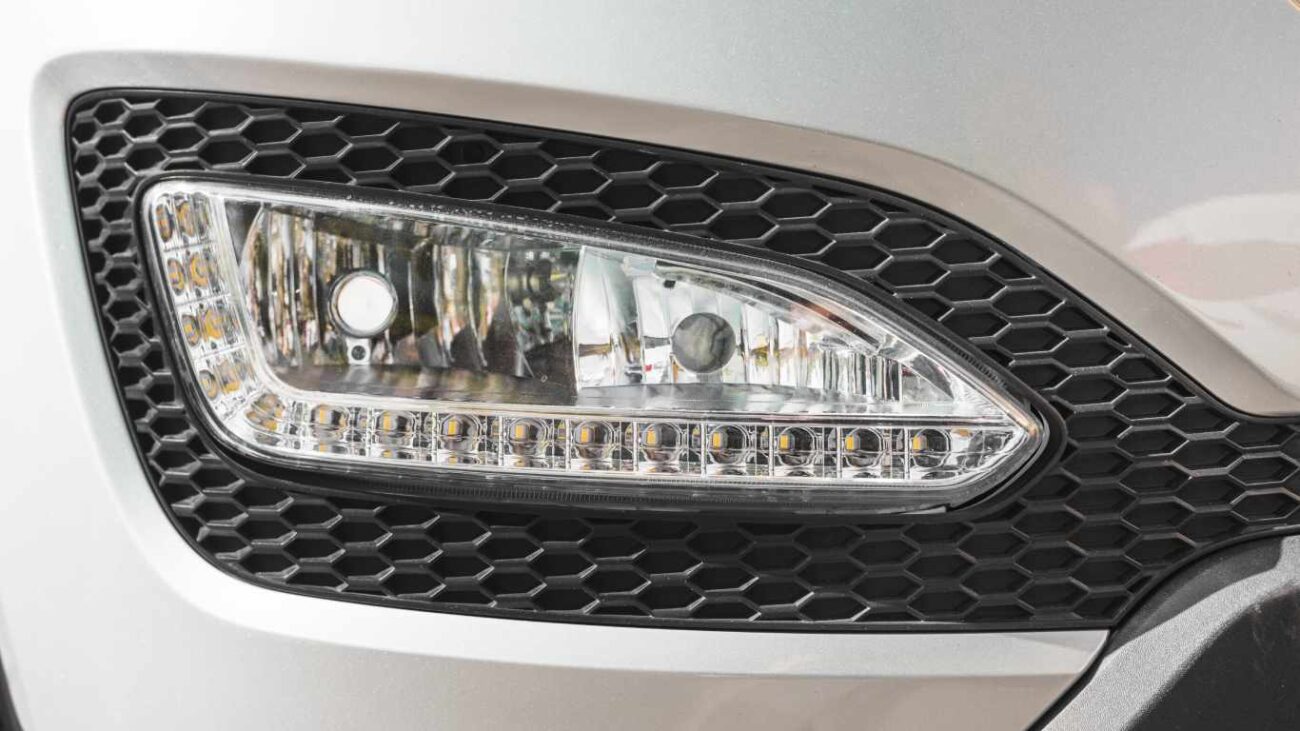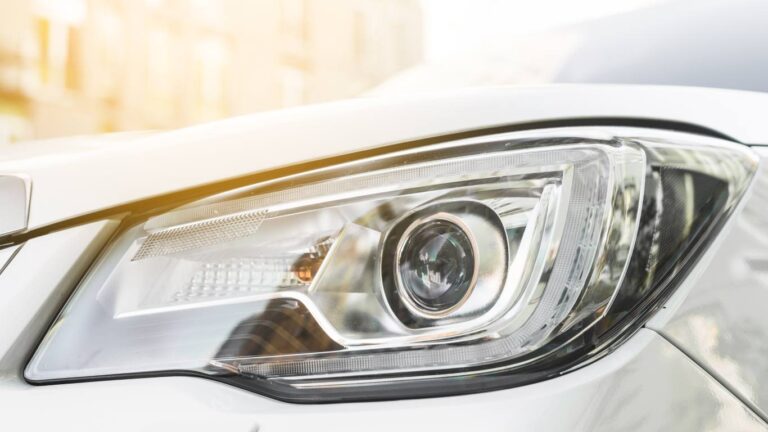This comprehensive guide discusses the world of car bumpers and grilles, exploring their types and materials. This article provides valuable insights, from understanding the different types of bumpers and their functions to exploring the latest grille designs and materials.
What Is the Car Bumper?
The front and rear bumper are protective structures designed to absorb impact in collisions. They act as a barrier, reducing harm to the vehicle and protecting passengers. Both the front and rear bumper offer comprehensive protection against impacts from any direction. Car bumpers effectively minimize damage to the vehicle and its occupants in low-speed collisions.
History of Bumper: From Steel to Safety
Steel was used to make bumpers in the early days of automobile production. Due to their inability to effectively absorb impact, cars suffered severe damage in collisions. However, technological advancements led to dramatic changes in bumper design. So, lighter materials replaced metal bumpers to improve fuel efficiency and meet stricter safety standards.
Modern bumpers are made from composite, fiberglass, or plastic materials, which allow for improved energy absorption in collisions. Additionally, modern bumpers are designed to meet stringent safety regulations, providing enhanced impact protection while maintaining aesthetic appeal.
5 Types of Car Bumper Based on Function and Aesthetics
There are five main types of bumpers to consider.

Standard Bumper
The most prevalent type of bumper on cars is the standard bumper. Typically made of plastic, it offers minimal protection against minor impacts. These bumpers usually feature a paint-matched plastic cover and energy-absorbing mechanisms but lack steps or hitches.
Step Bumper
Some vehicles, trucks, and SUVs feature a step-shaped cutout at the center of the bumper, below the license plate. These bumpers often include holes for installing ball hitches. Commonly found on SUVs and trucks, they have a raised central section for easier access to the cargo area or truck bed. These bumpers can withstand more forceful impacts.
Cowboy Bumpers
Typically found on vintage trucks, these towering, robust bumpers are usually chrome-plated. Designed to draw attention and haul large trailers, they are a hallmark of classic automotive style.
Tube Bumpers
These bumpers are made of metal and mounted on lifted trucks and Jeeps. Constructed from sturdy steel tubing, they rely on their frame to absorb collision impact.
Roll Pan Bumpers
Tiny vehicles often feature roll pan bumpers. These typically accommodate trailer hitches centrally positioned behind the bumper. Unlike traditional bumpers, roll pan bumpers replace the back bumper, offering a streamlined, elegant look. They are made with plastic or fiberglass and are primarily designed to enhance a car’s aesthetics.
Bumper Types Based on Material Composition
The market offers a variety of bumper materials. Several common types of bumper assemblies include:
Steel Bumper
Steel bumpers are one of the most widely used types of bumper on the market. It is robust and durable, providing excellent protection in accidents. However, steel bumpers can be heavy, potentially reducing the car’s fuel economy.
Aluminum Bumper
Aluminum bumper assemblies offer excellent protection in accidents due to their lightweight nature. They are also resistant to corrosion and can withstand harsh weather conditions. However, steel bumper assemblies generally provide greater strength and durability.
Plastic Bumper
Plastic bumper assemblies are lightweight and easily molded into various shapes and designs. They are also simple to replace and repair. However, compared to steel or aluminum bumper assemblies, they may offer less protection.
Composite Bumper
Composite bumper assemblies combine different materials, such as steel and plastic or aluminum and plastic. These hybrids leverage the strengths of each component, offering the flexibility and mold ability of plastic alongside the strength and durability of steel or aluminum.
Things to Consider Before Selecting a Bumper Assembly
Consider several factors when choosing the right bumper for your car, including:
- Vehicle type: Different vehicles require different bumper assembly types.
- Intended vehicle use: Off-road vehicles may need strong and durable bumper components.
- Local regulations: Some states or countries have specific laws governing allowable bumper assemblies.
Types of Bumper Cars to Buy: The Best Ones
Plastic bumpers dominate the automotive industry today. Modern auto bumpers are typically constructed from thermoplastic olefins, a composite material blending plastic molecules, rubber, and reinforcing fillers like calcium carbonate or carbon fiber. This combination provides a plastic that excels in impact and resistance while bonding effectively with various paints and finishes, making it ideal for auto bumpers.
Plastic has become the preferred material for contemporary automobile bumpers for several reasons. Its lightweight nature and aerodynamic properties can improve fuel efficiency than metal. Additionally, plastic’s malleability simplifies both bumper manufacturing and repair.
Types of Bumper Grills

Billet Grills
Billet bumper grills are constructed from steel or high-grade aluminum. These premium materials lend a polished appearance and provide added protection for your vehicle.
Each billet grill is custom-made to perfectly match your car’s make, model, and year. Billet Grill allows for extensive personalization to enhance your vehicle’s aesthetic appeal. Some owners prefer classic vertical or horizontal bar designs, while others opt for more distinctive patterns like punch, flame, or spider web motifs.
Grill Mesh
The front grille is a defining feature of any car. A mesh grille can instantly give your vehicle a distinctive, aggressive look.
Mesh grilles are crafted from ABS plastic, steel, or aluminum and come in various finishes like matte black, chrome, or polished metal. The mesh pattern can be created by weaving individual strands or as a single piece.
Glossy Black Mesh Grille
A glossy black mesh grille is a popular grill to add a touch of sportiness to your car. A black finish with the intricate pattern of a mesh grille creates a visually striking and modern look.
Grills with LEDs
The ideal addition to the front of your car is an LED grill. It adds even more functionality. There are numerous types and light patterns available for LED grills. This stylish accessory adds illumination to any car, perfect for off-roading or inclement weather.
-
Glossy Black Mesh Front Bumper Grille for 2011 & 2012 Honda Accord$125
-
Glossy Black Front Bumper Grille for 2004-2010 Chrysler 300 & Chrysler 300C$140
-
Glossy Black Mesh Front Bumper Grille for 2010 & 2011 Toyota Camry$125
-
Glossy Black Front Bumper Grille for 1999-2005 Volkswagen Jetta$125
-
Mesh Front Bumper Grille For 2009-2010 & 2011 Honda Civic$115
-
Horizontal Billet Style Front Bumper Grille For 2012 Honda Civic (Factory Style)$125
-
Mesh Front Bumper Grille For 2012 Honda Civic$125
Which Is Better for Car Bumper Repair or Replacement?
Depending on how much damage, a bumper repair or replacement may be necessary. Consider several factors when deciding between bumper repair or replacement. DIY methods can repair minor damages like painting and sanding.
More substantial losses, however, might call for expert intervention. It’s critical to compare the costs of repair and replacement alongside several aspects, including the age of the vehicle, the degree of damage, and the accessibility of replacement parts.
FAQ | The Car Bumper & Grill
What is the function of auto bumper?
A car bumper is a protective structure designed to absorb impact in a collision, minimizing damage to the vehicle and protecting passengers.
Can I replace a damaged grille myself?
Depending on your mechanical skills and the complexity of the grille, you might be able to replace it yourself. However, for intricate designs or complex installations, professional help is advisable.










